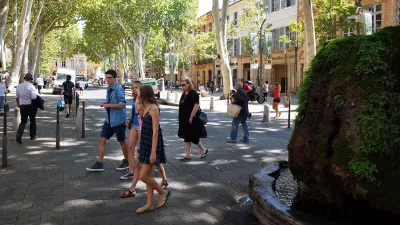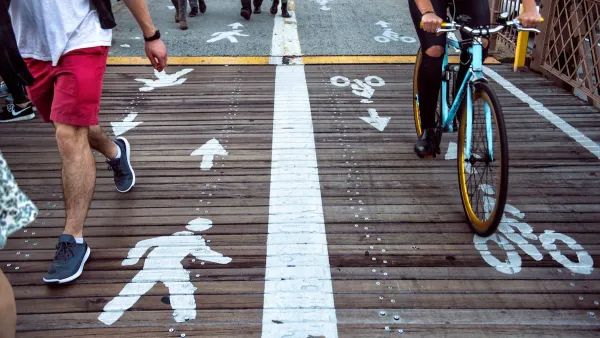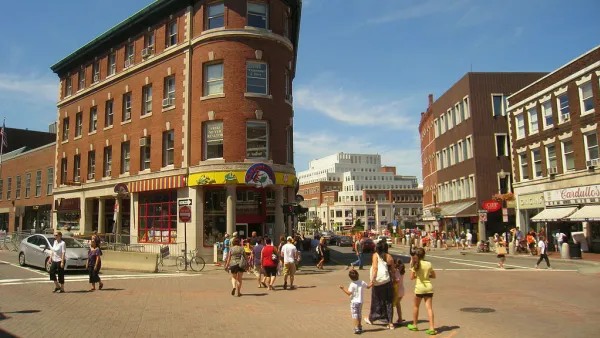Based on empirical study, J. Alexander Maxwell and fellow University of Strathclyde researchers, in collaboration with Chuck Wolfe, argue for recalling historic patterns of pedestrian city settings in contemporary urban design and policies.

In a recent study, J. Alexander Maxwell and fellow researchers from the University of Strathclyde’s Urban Design Studies Unit in Glasgow found evidence that before the rise of the automobile, cities developed on a walkable “human” scale, with main streets that rarely exceeded 400 meters (a little more than 437 yards) (the "400-m rule"). Along with Chuck Wolfe, they argue that this uniformity reveals an underlying pattern to pedestrian city settings, which should be considered in contemporary urban design and policies.
They note:
Some elements of our urban environments change relatively quickly over time. New shops replace old shops, new buildings replace old buildings, and people come and go. However, other elements are more permanent and often reflect the planning policies, design paradigms, and technologies of the times when they were built. In a sense, these surviving features provide snapshots of our urban histories.
Among their preliminary explorations was a test of the 400-m rule against 100 historically diverse main street networks from cities in 30 different countries around the world. Figures illustrate historic cases, including main street networks from groupings of ancient, medieval, renaissance, baroque, and industrial study areas. Post-industrial cases included main street networks from groupings of Garden City, Radiant City, New Urbanism, and informal settlement patterns of development.
The results of this empirical study suggest that the observational claims behind the 400-m rule are in fact true.
The authors opine that the uniformity of the findings suggests an "effortless" expression of human tendencies – a signature that should be honored by policy and design consistent with this established norm.
Their conclusion illustrates typologies of liveable communities that attempt results that are very similar to the 400-m rule, and provides a call to action:
[M]ore conscious study is needed to tie together past and present. If underlying patterns of human-scale design in urban settings can be captured from historic environments and reapplied in contemporary policy and implementation contexts, then new purpose can be realized from past realities.
FULL STORY: City main street networks show a drastic shift away from historic patterns of human-scale design

National Parks Layoffs Will Cause Communities to Lose Billions
Thousands of essential park workers were laid off this week, just before the busy spring break season.

Retro-silient?: America’s First “Eco-burb,” The Woodlands Turns 50
A master-planned community north of Houston offers lessons on green infrastructure and resilient design, but falls short of its founder’s lofty affordability and walkability goals.

Delivering for America Plan Will Downgrade Mail Service in at Least 49.5 Percent of Zip Codes
Republican and Democrat lawmakers criticize the plan for its disproportionate negative impact on rural communities.

Test News Post 1
This is a summary

Test News Headline 46
Test for the image on the front page.

Balancing Bombs and Butterflies: How the National Guard Protects a Rare Species
The National Guard at Fort Indiantown Gap uses GIS technology and land management strategies to balance military training with conservation efforts, ensuring the survival of the rare eastern regal fritillary butterfly.
Urban Design for Planners 1: Software Tools
This six-course series explores essential urban design concepts using open source software and equips planners with the tools they need to participate fully in the urban design process.
Planning for Universal Design
Learn the tools for implementing Universal Design in planning regulations.
EMC Planning Group, Inc.
Planetizen
Planetizen
Mpact (formerly Rail~Volution)
Great Falls Development Authority, Inc.
HUDs Office of Policy Development and Research
NYU Wagner Graduate School of Public Service





























